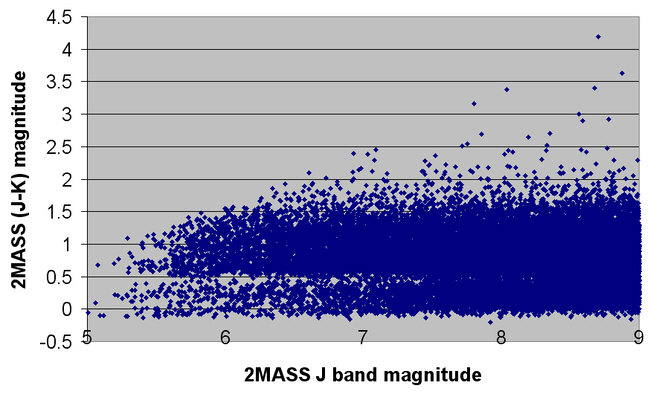
Return to the front page
| Professional-amateur collaborations in astronomy and astrophysics |
An outlier can be thought of as unusually small or unusually large value in a data set - a data point that is very different from the rest. Sometimes outliers are due to human error or to errors in the data processing pipeline but finding an outlier that really does belong in the data set under review can help indentify rare objects or new phenomena.
A random sample of 32000 2MASS results.
J band magnitude < 9, photometric quality AAA and no artifact contamination or confusion.
Note that very few 2MASS point sources have a (J-K) magnitude > 2.0 and ask yourself what might be the astronomical reason for the zone around (J-K) 0.45 to 0.50 where so few stars can be found.

Examination and cross referencing of the 2MASS point sources where (J-K) > 3.0
Download the results of the 1569 candidates - please note that some of these very red stars are already in the International Variable Star Index.
As an example of the potential of these stars - the target at 01h 35m 28.80s +49d 22m 41.77s has a range of 1.6 magnitudes in the Northern Sky Variability Survey NSVS database but does not seem to have its variability reported previously.
Please appreciate that all these targets are offered in good faith but it is your responsibility to check if any of them have been independently discovered and published elsewhere.
Martin Nicholson - Daventry, United Kingdom.
This page was last updated on August 2nd 2010.